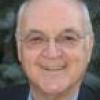This coming weekend the Church in England observes the feast day of one who is known by few Catholics in the United States and Canada, namely, Adrian of Canterbury. Meanwhile, the churches of the East, as well as Benedictines and Cistercians in the West, celebrate the feast of an emerging major figure in the history of theology, Gregory of Nyssa, one of the three Cappadocian fathers (along with his older brother, Basil the Great, and Gregory Nazianzen).
What follows is drawn largely from my Lives of the Saints: From Mary and St. Francis of Assisi to John XXIII and Mother Teresa (HarperSanFrancisco, 2001).
Adrian was an African by birth who died early in the 8th century. He was abbot of the monastery of Sts. Peter and Paul in Canterbury (later named in honor of St. Augustine of Canterbury).
Under Adrian's leadership and that of Theodore, Archbishop of Canterbury, the monastery became a major center of learning, producing a number of future bishops and archbishops. Adrian himself taught at the monastery for some 40 years.
After his death on Jan. 9, probably in 710, he was buried inside the monastery. Almost four centuries later, during a period of reconstruction, his body was discovered to be "incorrupt and fragrant," a traditional sign of sanctity.
His tomb subsequently became associated with various miracles of healing, and his feast was added to liturgical calendars in England. However, it was never listed on the General Roman Calendar.
Gregory of Nyssa, on the other hand, lived in the 4th century. He was born in Caesarea and studied in Athens, first in rhetoric and later, under the influence of Gregory Nazianzen, in theology.
He was ordained a priest around the year 362 at a time when celibacy was not a requirement. It is not clear whether he remained with his wife, or whether she had died or entered a monastic community.
Gregory himself spent the first few years of his priesthood in the monastic community founded by his brother Basil. Gregory felt that life in a monastic community was the ideal venue for the development of Christian spirituality, and his writings were regarded as having had a lasting impact on the growth of monasticism in the East.
Under pressure from Basil, Gregory accepted election as bishop of Nyssa in 371. At the time, the diocese was little more than a remote outpost near Armenia, where Arianism (the heresy that had denied the divinity of Christ and was condemned at the Council of Nicaea in 325) was still strong.
Indeed, he encountered fierce opposition from the local Arians, who accused him of embezzling funds and of irregularities in his election. He was later arrested by the governor of Pontus, but subsequently escaped from captivity. However, he was not restored to his see until 378.
It is said that Gregory was more skilled as a thinker and writer than as an administrator, which means in plain language that he was generally unsuccessful as a bishop.
The year after he returned to Nyssa, his brother Basil died. Almost as if Basil had been a hindrance to him, Gregory thereafter became an important ecclesiastical figure and a productive theologian, authoring a number of works in defense of Nicene orthodoxy.
The significance of his writings was not fully appreciated, however, until the second half of the 20th century when several leading scholars rediscovered them.
The Emperor Theodosius thought highly enough of Gregory to send him on missions to counteract Arianism in Palestine and Arabia, and also to invite him to play an important role in the Council of Constantinople in 381, the council that defined the divinity of the Holy Spirit. Gregory would preach the funeral oration for the council's first president, Melitius of Antioch.
Like Adrian of Canterbury, Gregory of Nyssa's name does not appear on the General Roman Calendar, but, as noted above, his feast is celebrated in the East on Jan. 10 and he is also commemorated on the Benedictine and Cistercian liturgical calendars.
If, according to the Second Vatican Council's Dogmatic Constitution on the Church (nn. 49-51), saints are not only intercessors who address our personal needs but examples of Christian holiness, there are perhaps only a limited number of Christians who will look to Adrian of Canterbury and Gregory of Nyssa for inspiration.
But they can be moral and spiritual guides for students, especially of theology, for professors, again especially of theology, and for those holding positions of leadership at whatever level of church life.
Both saints remind us of what the church's mission is all about and motivate us to pursue it as faithfully as they did.
© 2010 Richard P. McBrien. All rights reserved. Fr. McBrien is the Crowley-O'Brien Professor of Theology at the University of Notre Dame.




